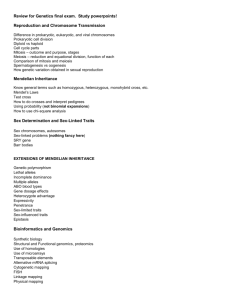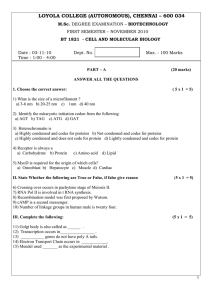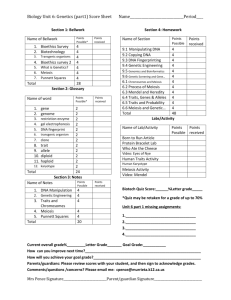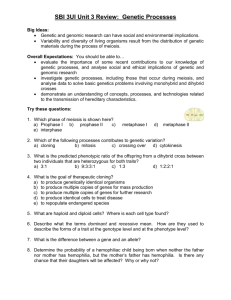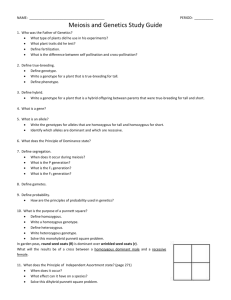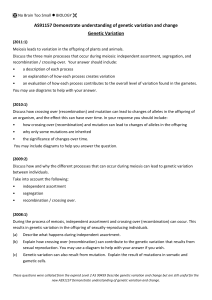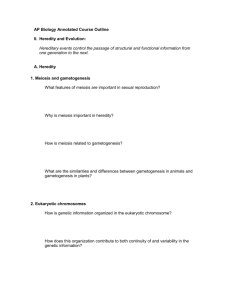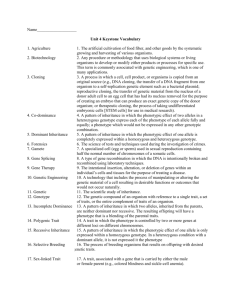8. Meiosis and Variation
advertisement
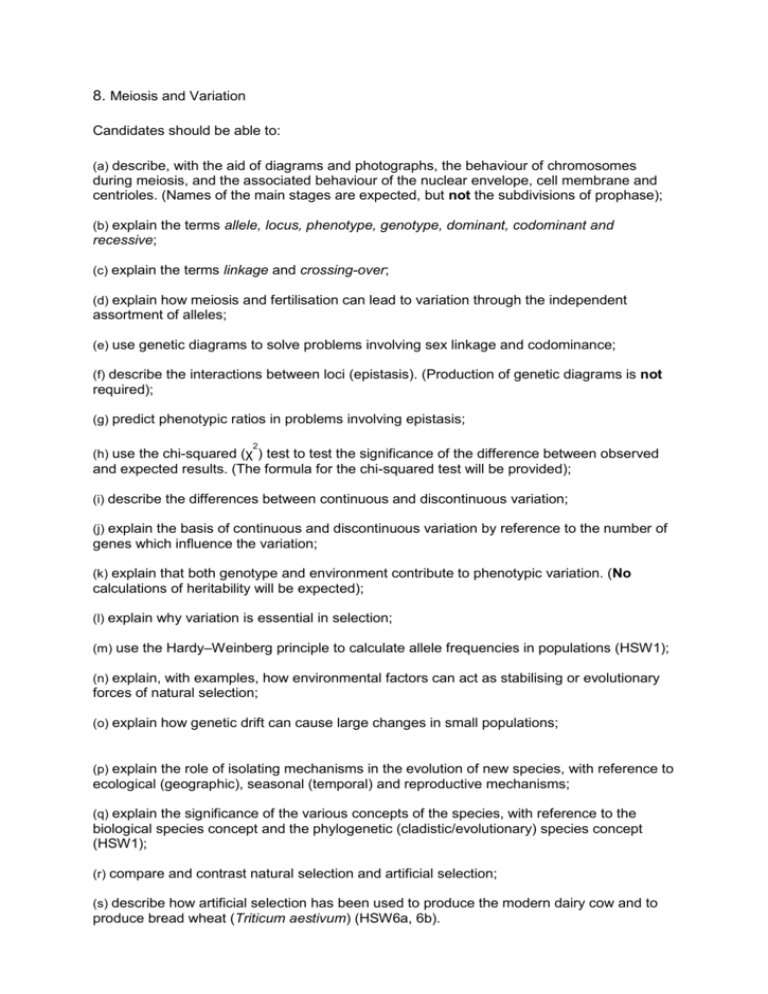
8. Meiosis and Variation Candidates should be able to: (a) describe, with the aid of diagrams and photographs, the behaviour of chromosomes during meiosis, and the associated behaviour of the nuclear envelope, cell membrane and centrioles. (Names of the main stages are expected, but not the subdivisions of prophase); (b) explain the terms allele, locus, phenotype, genotype, dominant, codominant and recessive; (c) explain the terms linkage and crossing-over; (d) explain how meiosis and fertilisation can lead to variation through the independent assortment of alleles; (e) use genetic diagrams to solve problems involving sex linkage and codominance; (f) describe the interactions between loci (epistasis). (Production of genetic diagrams is not required); (g) predict phenotypic ratios in problems involving epistasis; 2 (h) use the chi-squared (χ ) test to test the significance of the difference between observed and expected results. (The formula for the chi-squared test will be provided); (i) describe the differences between continuous and discontinuous variation; (j) explain the basis of continuous and discontinuous variation by reference to the number of genes which influence the variation; (k) explain that both genotype and environment contribute to phenotypic variation. (No calculations of heritability will be expected); (l) explain why variation is essential in selection; (m) use the Hardy–Weinberg principle to calculate allele frequencies in populations (HSW1); (n) explain, with examples, how environmental factors can act as stabilising or evolutionary forces of natural selection; (o) explain how genetic drift can cause large changes in small populations; (p) explain the role of isolating mechanisms in the evolution of new species, with reference to ecological (geographic), seasonal (temporal) and reproductive mechanisms; (q) explain the significance of the various concepts of the species, with reference to the biological species concept and the phylogenetic (cladistic/evolutionary) species concept (HSW1); (r) compare and contrast natural selection and artificial selection; (s) describe how artificial selection has been used to produce the modern dairy cow and to produce bread wheat (Triticum aestivum) (HSW6a, 6b).


